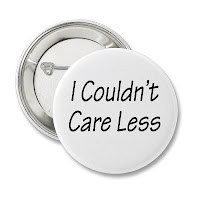Image Sharing
When my daughter Googled her name… I turned out to be her biggest
online privacy problem
-
Lorraine Akemann
While
browsing through the BlogHer archives I found a
really interesting blog posted back in January by Lorraine Akemann, “3 Lessons I Learned About Online Privacy When My Teen Googled Her Name” .
Akemann, a mom blogger, explains her surprise upon discovering that the photos
of her daughter that she had uploaded onto her blog were popping up in a Google
search of her daughter’s real name despite being labeled “anonymously” (which
up to this point she believed was an adequate measure for protecting their
privacy), meaning her daughter’s online identity was now linked to her blog
unintentionally. You can read through her post for some tips on how she’s dealt
with this issue and the changes she’s making in her blogging practice since.
Many
mom bloggers do upload identifiable images of their children to their blogs
while others choose not to or meet somewhere in the middle, such as only using
pictures in which their faces are obscured. Bloggers are well aware of the
benefits of adding images to their posts. Images can help break up chunks of
text making a post more visually appealing/interesting for the reader, make a
post more shareable across different image-heavy platforms like Facebook or
Pinterest potentially leading to more views, and when used well compliment the
content of the post. Speaking of Facebook and Pinterest, it’s fairly common for
bloggers to want to beef up their social media presence in these other realms
as well as other popular social media platforms like Instagram, all of which involve
increasing image sharing, in order to gain more of a following for their blog.
In
another Blogher post I ran into “8 Things You Need To Know Before You StartYour Blog”,
Jill Robbins
writes:
Will you show your kids’ picture or reveal
their true names? These are all things to think about BEFORE you share your
story online. Privacy may not be important now, but it may become important at
some point. Once information is out there, you can’t take it back.
I added the emphasis on the “before” there because I think
that’s a really crucial point. What Akemann’s article brings to light is the
importance of taking just as much caution when posting an image as you should
with your words and not having a false sense of security when it comes to
sharing information about yourself and your family online. In Akemann’s case
(and many others who’ve made similar mistakes online) she was unaware that her
blog was infringing on her daughter’s privacy until after the fact. In order to
make decisions about online privacy and be able to set boundaries, bloggers
(especially those just starting out that have less experience) need to be more
aware and informed of the consequences. Anecdotes and advice like that of Akemann
and Robbins can help in bringing some of that to light. I don’t have a large
social media following (or much of any size following at all really) or a
personal brand to promote but working on this post has gotten even a casual
user such as myself to make some changes to how I use sites like Instagram and
Facebook. I find that I often take the stance that as long as the images fit
with what I’ve deemed to be appropriate then it’s okay to share them online,
even when they include other people like family members and are sometimes easily
accessible by strangers (ie: public accounts). I’ve begun to re-think that
position.




Comments
Post a Comment